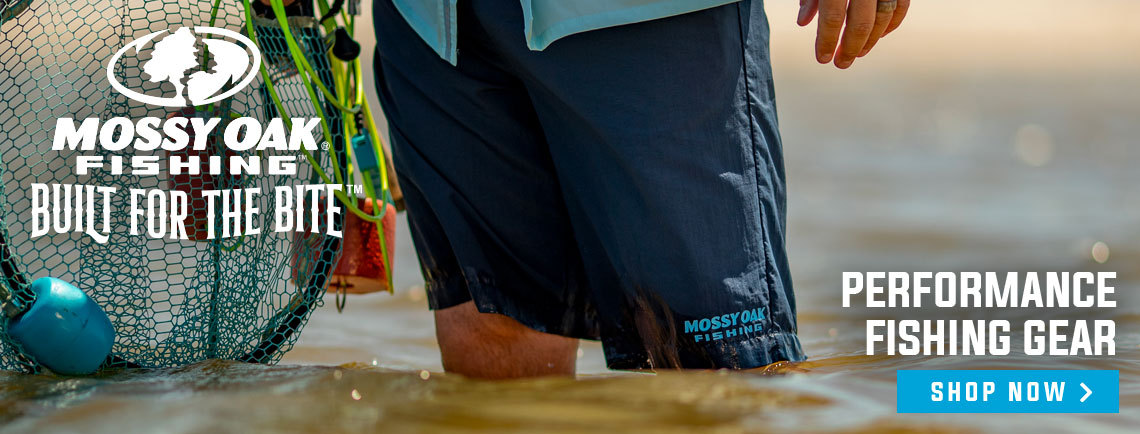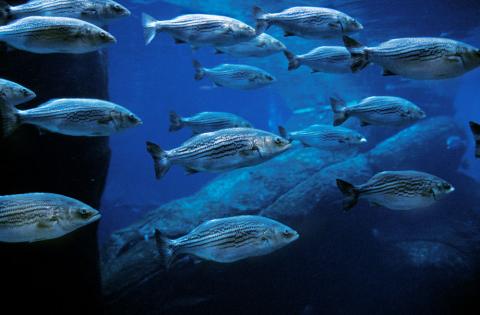Day or night, sandy beaches are a great place to fish for striped bass and other coastal saltwater species.
Bob Humphrey
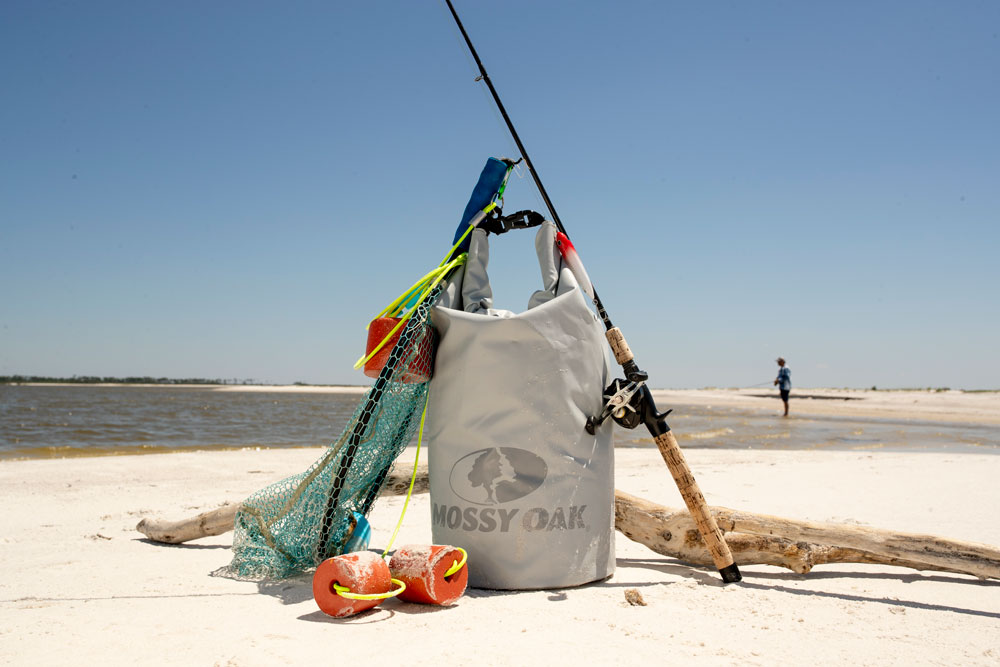
Sandy beaches are a big summer attraction for those who live in or near — or visit — coastal communities. Most hit the beach in hordes at the height of the day to soak up the sun and splash in the surf. Others prefer the off hours, not only for the solitude, but for the sport. The reel action starts when the sun sits low or is absent altogether, the beaches clear and the crowds now form just beyond the breaking waves. Here are a few tips if you want to hit the beach during off-hours.
Saltwater Fishing for First Timers
Know Before You Go
Check the weather — There are a few things to research before you head to the beach. First, check the weather. The coast's weather can change instantly, so you will want to be weather aware. Fishing through an occasional shower is okay, but lightning on the coast is a real danger. Even if you're not fishing, you and your family should never stay on the beach when lightning is a hazard.
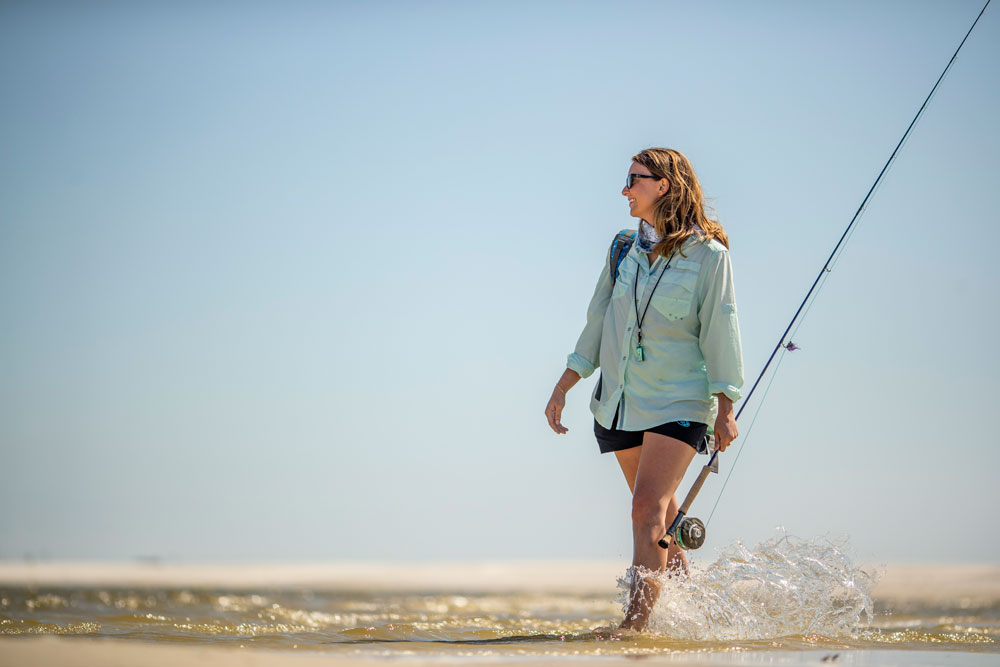
Check the fishing reports — Next, check the fishing report on the state natural resources website. The state will list all the beaches, and you can learn what other anglers are catching fish on. Local bait stores can also be a great resource. You are in the money when both the state fishing report and the local bait shop agree on what bait or lure you should be using. The local bait shop is a great resource for finding out-of-the-way spots only local anglers use.
Make sure you’re legal — Check state and local regulations on what license or tags you may need. Ensure that the tackle, bait or lures you use are legal for the beach you plan to fish. You should also know what fish you can keep and what you must release. Of the fish you can keep, know how many you can keep and if there are any regulations on the size of the fish you are legal to keep. Finally, ensure everyone fishing has a license and knows the local regulations.
Gearing Up
Rod and Reel — Most any spin-casting outfit will work for surf fishing, but there are certain setups better suited to the task. Surf rods are typically longer — 7, 8 or 9 feet — depending on the conditions or type of fishing you plan to do. A fast action 7' rod might be better suited for smaller fish in estuaries and lighter lures. An 8' fast action rod is better suited to medium lures — up to 30 ounces — while a medium to heavy 9' is a better choice for the open beach, heavier lures or bigger fish. For fly rods, a 9 for 9 should get the job done.
In any case, you’ll want a rod with a long, stiff butt, but a soft tip. The latter will help you slingshot plugs and lures longer distances while also better revealing a soft bite on a bait rig. The former also helps with launching lures and battling bigger fish. In addition to giving greater leverage during the cast, long butts also provide a sturdier base when using sand spikes — basically a length of PVC tube with an angled cut on one end to drive into the stand and hold your rod when bait fishing. The most popular reel for surf fishing is an open-face spin-casting type in the 3000-5000 class, depending on the situation.
Line — Braided line allows you to go heavier than you could with monofilament or fluorocarbon, and you’ll want to go heavy because you never know what might bite your hook. Stripers can get up to 40 or even 50 pounds and sharks bigger still. Somewhere in the range of 30- to 40-pound test is a good average depending on circumstances and targeted species. Heavier line also offers more abrasion resistance around reefs and rocks. Onto this, add three to four feet of lighter mono or fluoro leader for leader-shy fish and a little more flex during the fight.
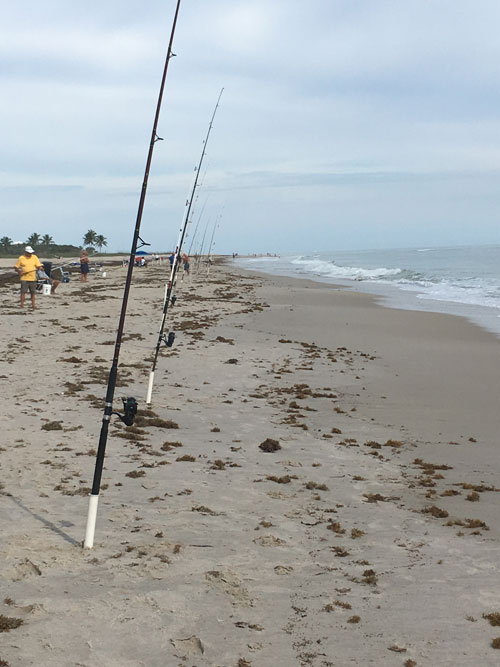
Terminal Tackle
Your options for terminal tackle are limited mostly by circumstances and conditions. Casting plugs is a popular method where you’ll want floating poppers or shallow diving plugs. You’re fishing mostly shallow water and you don’t want something that’s constantly hanging up on the bottom. More popular baits include chunk bait, sea worms, clams or eels. Clams, worms and chunks are usually fished on a surf or hi-lo rig with two hooks above and a sinker below. Live bait like eels or finfish (if available) work best on a slider rig with an inline sinker above the bait.
Miscellaneous Gear
Circumstances dictate what else you might need. A pair of shorts and sneakers or boat shoes might suffice in warm conditions but chest waders allow you to wade out farther and provide protection against the cold. You’ll want the aforementioned sand spikes if you’re bait fishing. If it’s a casual excursion, a small tackle box with a few plugs or flies will suffice. If it’s more of an expedition, you may want a cart to tote your tackle — or where practical and allowed, you can simply drive out on the beach. Just make sure you have a vehicle capable of doing so.
You will want to bring a cheap lawn chair, especially if you are fishing with more than one rod. A lawn chair makes it easier to get to the rod; otherwise, you're trying to get up out of the sand every time you get a bite. Don’t forget a lantern and headlamp if you plan on fishing before or after dark.
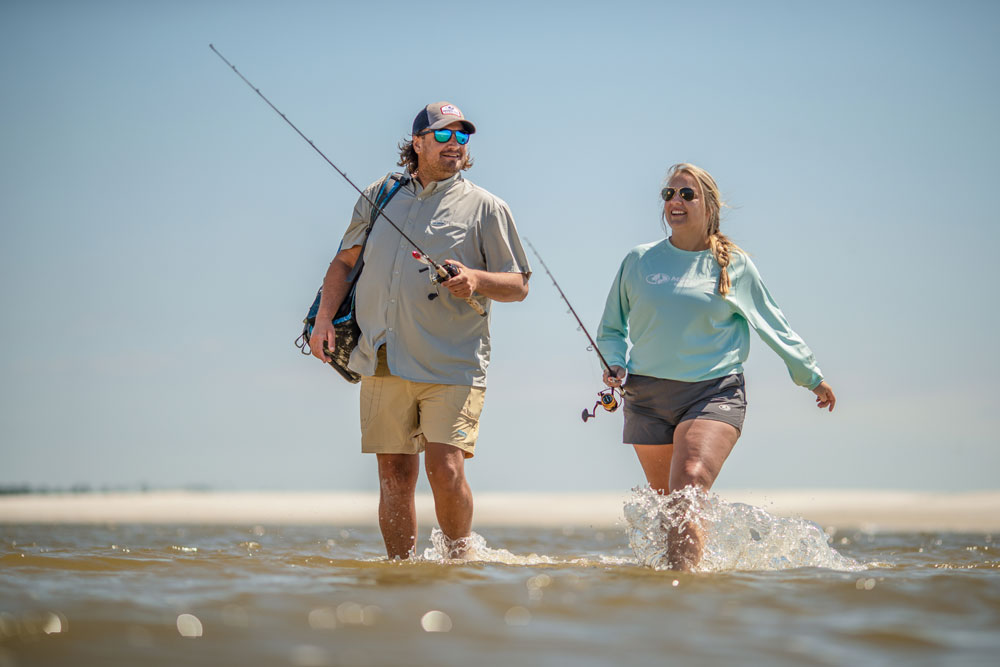
Location
Most any beachfronts will work but some are better than others. Current and turmoil confuse baitfish, and predators like stripers and bluefish often cruise the shoreline in search of an easy meal. Out on the open beach, fishing is often better when the surf’s up. Low tide is a good time to survey an area to look for holes, pools, pockets and bars and then return at high tide and fish these areas when they’re underwater. River mouths can be a great option as the rivers flush bait into deeper water where predators lie in wait. Some river and estuary mouths also have jetties that provide structure where bait will concentrate.
State and local fishing reports will often list the tide schedule. It’s good information to know beforehand, especially if you're squeezing in a fishing trip while on vacation with the family. You can maximize the time you have scouting and fishing but still be there for family events.
Summary
The above is, at best, a primer and enough to get you started. Time and experience will teach you the best locations and the best tackle for each. And unlike the sunshine crowd that grumbles at the noisy family who sets up right next to them on an otherwise sparse beach, most beach anglers are welcoming to polite company and eager to share tips and advice — so long as you give them their space. With a little experience, you will be pulling fish on the beach in no time.

